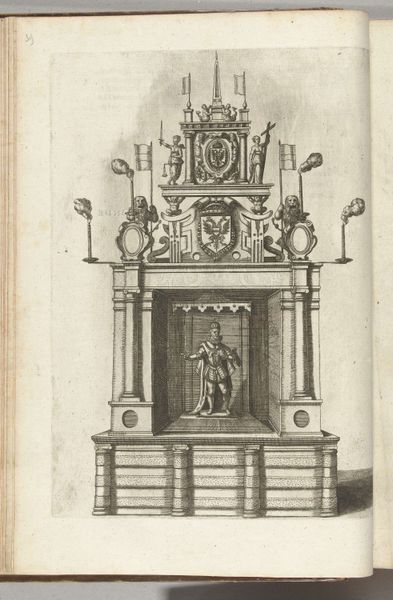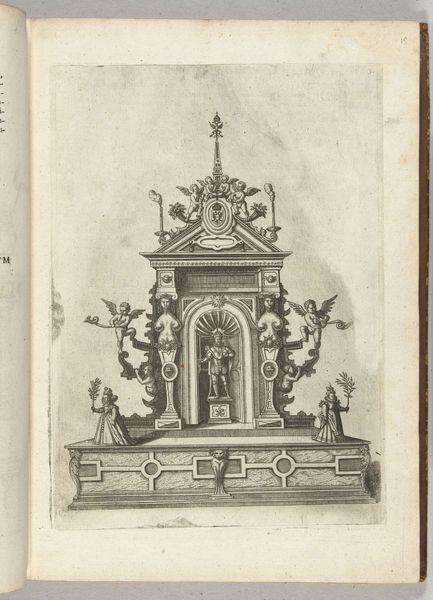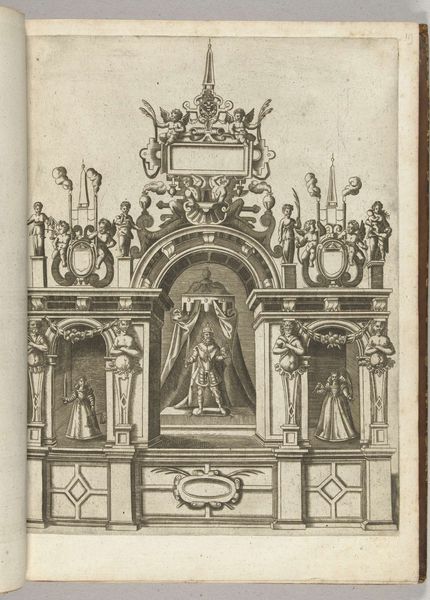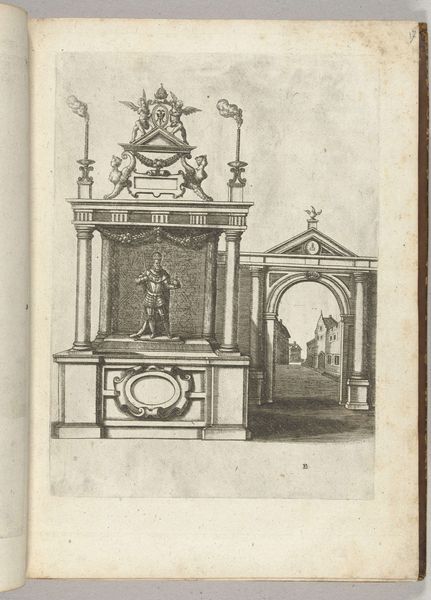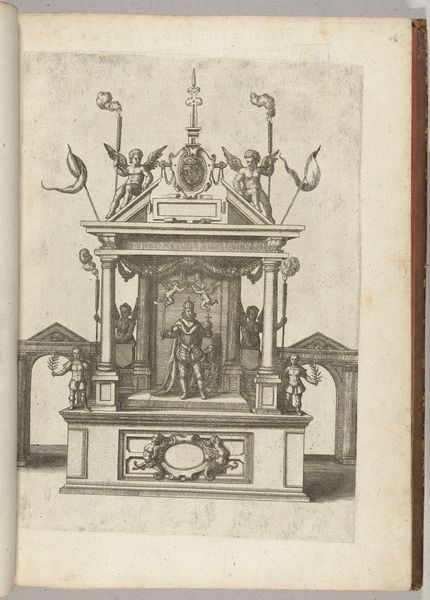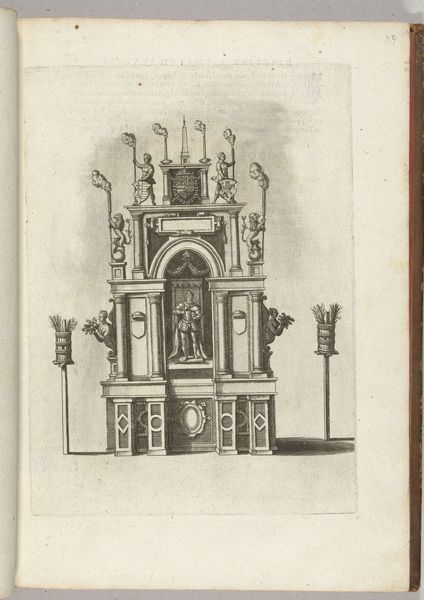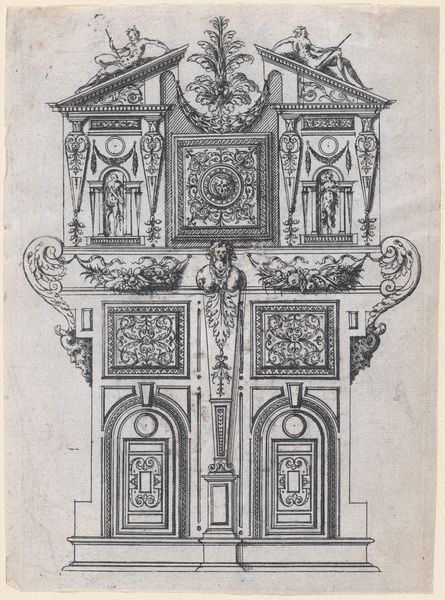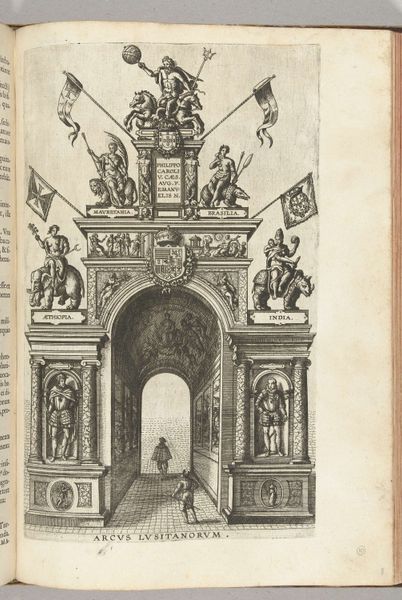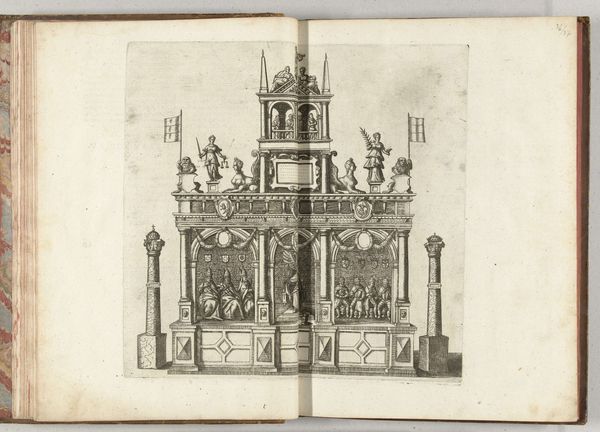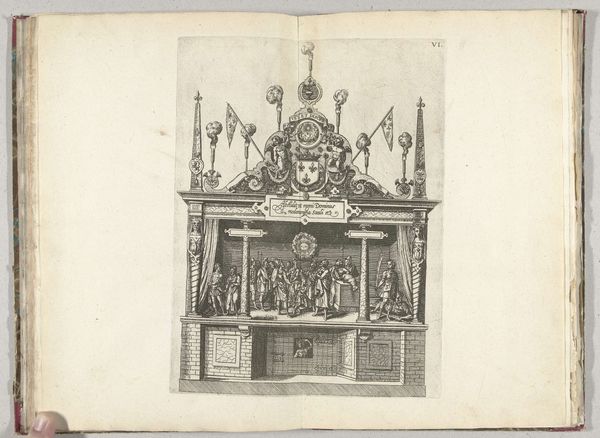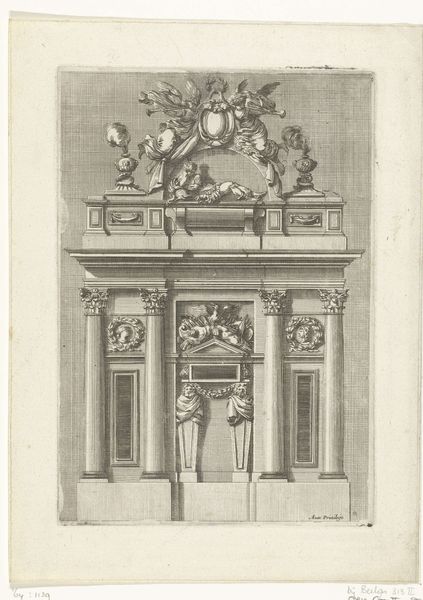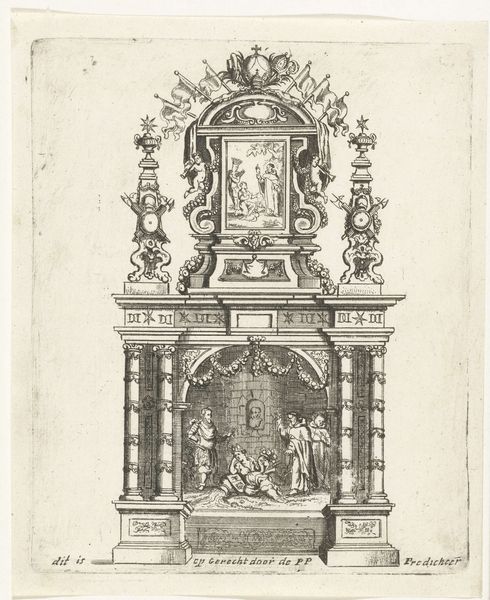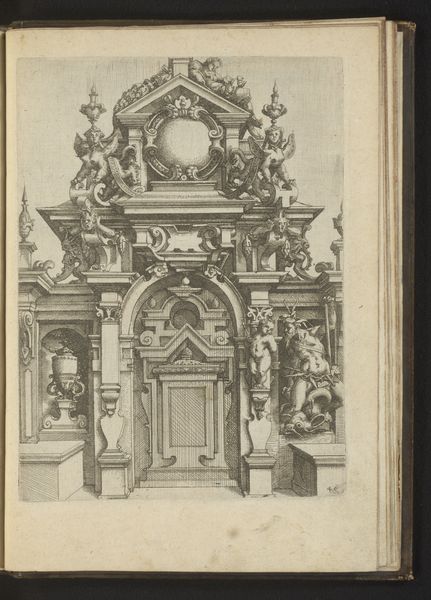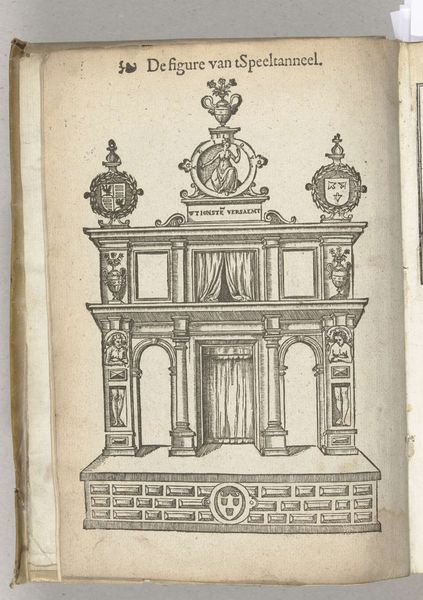
drawing, print, ink, engraving
#
drawing
# print
#
figuration
#
11_renaissance
#
ink
#
coloured pencil
#
history-painting
#
northern-renaissance
#
engraving
Dimensions: height 313 mm, width 230 mm
Copyright: Rijks Museum: Open Domain
Curator: This engraving from 1594, titled "Toneel met koning Albrecht I," currently residing in the Rijksmuseum, presents us with a curious construction. What's your immediate take? Editor: Austere, wouldn't you say? All that grey scale and linear precision feels very formal, deliberate. I'm curious about the means of production; the line work seems incredibly intricate, almost mass-produced yet so detailed. Curator: Well, engravings in the late 16th century were often associated with disseminating information and constructing specific imagery of rulers. Take a closer look, and you'll see it depicts a stage or "toneel" showcasing King Albrecht I, potentially created as part of some public spectacle. Consider the role prints played in solidifying political narratives. Editor: Absolutely, but I can't help but focus on the texture created through these fine lines. It looks printed onto paper, what kind? Its social life depends heavily on its dissemination – where and how it was sold, to whom. Was it propaganda, or a simple record? The materiality whispers about a world of commerce and class. Curator: Indeed. The placement of the King within this architectural framework, flanked by columns and adorned with flags, reinforces his authority. It taps into the symbolism of classical architecture. What do you think it communicates about the ideal leader, or rather, about Habsburg rule during that era? Editor: It definitely speaks of power. This combination of material production and propaganda could serve to reinforce existing class systems. But even more powerfully for me, how these choices made by the artist, the engraver, and perhaps their patron contributed to the social fabric. Curator: An excellent point. And isn't it fascinating how this one printed image carries all this socio-political weight? Editor: It truly does, even now! Material traces echoing with political intent. Curator: The power of images to shape and record history. Editor: The lasting power of making and distributing physical things to represent abstract political thoughts!
Comments
No comments
Be the first to comment and join the conversation on the ultimate creative platform.
